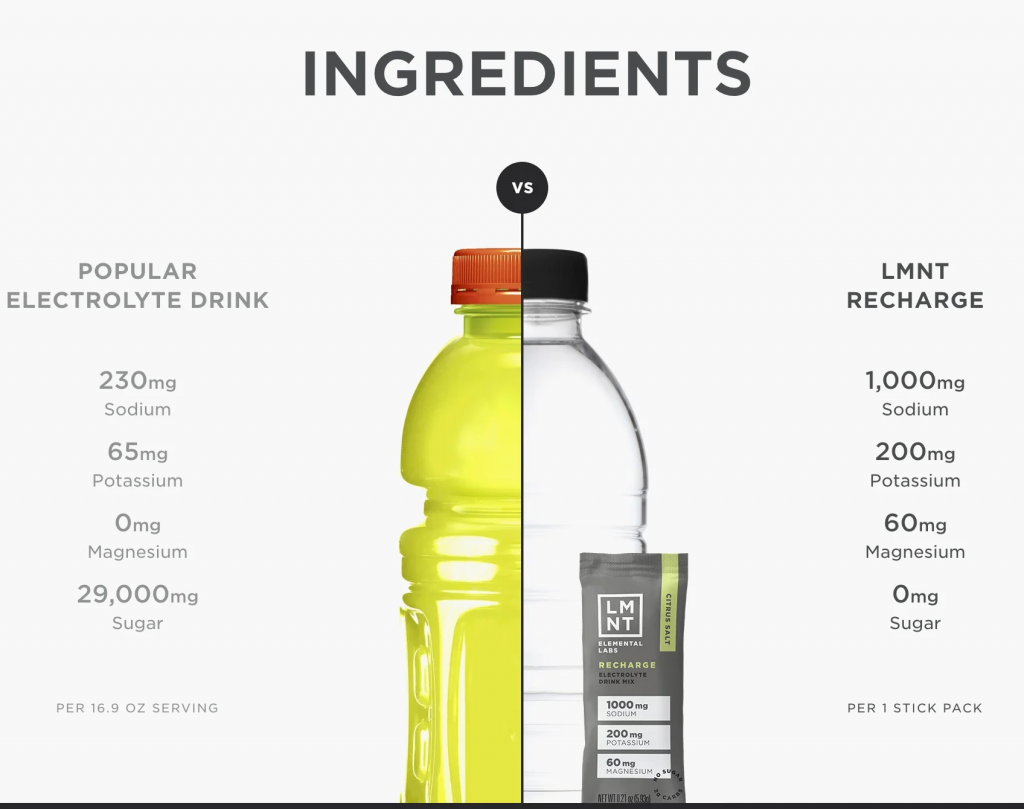While it may seem like “hydrating well” is a pretty simple part of your training to get right, there’s actually a lot more nuance than most runners realize.
First, you need to account for your sweat rate, which is the most important barometer for how much you need to rehydrate.
But, sweat rate can be influenced by a multitude of factors.
- Some people sweat more than others (personally I am a heavy sweater)
- Sweat rate will obviously be higher in hot and humid conditions
- Harder efforts will increase your sweat more than easy efforts – as does time.
- And Don’t forget about heat acclimatation and clothing choices.
So, in this article we’re going to teach you and walk you step-by-step on how to properly calculate your sweat rate so you’ll know exactly how much you need to rehydrate for any given workout, distance and temperature.
Body weight, body sweat, and body fuel
Under the conventional and dated model, to figure out how much you sweat, you simply measure how much weight you lost over the course of your run.
But scientific research has shown that there are a few problems with this model.
First, not all of the weight you’re losing is water!
A significant portion is fuel—carbs and fat, burned for energy during the course of your run.
The exact caloric cost of running varies from person to person, but a figure of 120 calories per mile is about right for most runners.
So, for example, over the course of an eight or nine-mile run, you’d expect to burn about 1000 calories.
If you are running at an easy pace, about half of these calories will come from carbs, and the other half will come from fat.
After doing some math on the energy content of carbs and fat, you’ll find out that you’ll be losing almost half a pound of fuel during your run.
On top of this, a wide body of research has established that your body stores water alongside glycogen, the molecule carbohydrates are converted into for storage.
For a runner in the summer, this means that each gram of carbohydrates that you burn liberates a few grams of water which can help maintain your hydration level, even though you’re losing water to sweat.
How to Properly Calculate Your Sweat Rate
Now, I could make you do all the math for yourself, but lucky for you we’ve created this handy sweat loss calculator that does all the hard math work for you.
To use the calculator, simply…
- Weigh yourself before you run – ideally with no clothes and after having gone to the bathroom.
- Go for your run and note the duration, intensity, temperature and humidity.
- During the run, keep track of any hydration you took in as well as any bathroom stops.
- Immediately weigh yourself post run with no clothes on and then fill in the data on the spreadsheet.
- Repeat for different temperature and humidity levels as well as effort and duration levels and use the included spreadsheet to track how your sweat rate changes in different environments.
You now have a scientifically accurate look at exactly how much you need to rehydrate for any type of workout and in any type of weather!
What about Electrolytes?
Now, most runners know that simply drinking water isn’t the best way to rehydrate. We need electrolytes too.
If you’re not sure exactly what electrolytes are or if you want to take a deep dive into the research on cramping and performance, check out this article.
But, one thing that has become more clear as researchers look at the role electrolytes play when it comes to rehydrating and endurance performance is that sodium (salt) is a much more important mineral than we previously realized.
Researcher’s posit that this is because higher sweat rates lead to higher sweat sodium concentrations.
In other words, anything that boosts sweat rate will make your sweat saltier.
Why? Some sodium is reabsorbed while you sweat, and how much can be reabsorbed depends on how fast you’re sweating.
As sweat begins to form in our sweat glands (before it reaches the surface of your skin), special ducts reroute some sodium back into the body.
But the faster you’re sweating, the less sodium can be reabsorbed before it’s secreted as “final sweat.”
That means the faster you sweat, the saltier your sweat will be.
This study of 10 healthy people demonstrates the effect clearly.
While folks with a lower sweat rate reabsorbed 86% of pre-sweat sodium, the group with a high sweat rate only reabsorbed 65% of pre-sweat sodium.
And by increasing exercise intensity from 50% to 90% of maximum heart rate, subjects experienced a 328% increase in sweat rate and a 311% increase in sweat sodium concentration.
You’ll notice the rate of increase between sweat rate and sweat sodium is about equal — that’s because they rise and fall in lock-step.
If you’re interested in calculating just how much sodium need, our partner LMNT has this really awesome free sodium intake calculator.
While you’re there, you can also pick up a free 8-count LMNT Sample Pack with any purchase.
One of the reasons I personally love LMNT so much is that their electrolyte formula contains more sodium than most other electrolyte drinks, which often don’t have enough sodium for endurance athletes.
Most commercially available electrolyte beverages are formulated for the average person looking to stay hydrated on a warm day or someone who lifts weights at the gym.

The research is pretty clear that endurance athletes need far more sodium in comparison to other electrolytes like potassium and magnesium.
Plus, they contain zero sugar and they come in small packets, which allow you to control the exact amount of sodium you need in your beverage. I’ll add more on warmer days and also use small amounts throughout the day.
I hope you find this useful and you enjoyed the in-depth look at the research.




